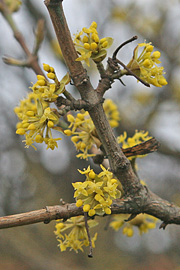

It also revealed the remains of the Roman town defences and evidence for floodplain reclamation.

The work identified a former channel of the River Itchen running through the site and dating prior to the later Roman period, when the river was diverted eastwards and outside the town walls. Detailed archaeological and palaeoenvironmental investigations at the site identified a sequence of sedimentary and environmental change that spans the Mesolithic period to present day. The traditional view that environmental manipulation was a development of the Late Mesolithic and Early Neolithic in Britain related to the move towards agriculture is therefore challenged.Īrchaeological investigations undertaken by Oxford Archaeology between 20 within the gardens of Pilgrims' School, in the precinct of Win-chester Cathedral, revealed floodplain deposits and stratified archaeological remains. Comparison of dates for burning at Thatcham and Star Carr in the Vale of Pickering indicates that initial activity was broadly contemporary and took place within 500-700 years of the start of the Holocene. Deliberate repeated burning of the lowland riverine and occupied terrace environments is proposed. They therefore provide an absolute chronology for disturbance, enable comparison of the wetland and dryland sequences and help elucidate questions on the timing and nature of occupation at Thatcham. Each date is from a level associated with burning phases as represented by peaks in charcoal coupled with pollen evidence for local vegetation disturbance. The sequence has been dated to 9150-8600 cal BC (9480☖8 BP, AA-55303) to 7950-7520 cal BC (8629☘2 BP, AA-55308) and provides evidence of repeated phases of fire and small-scale landscape disturbance in the early Holocene. Cambridge: Cambridge Scholars Publishing, 57-76 Multi-proxy environmental analysis of floodplain sequences adjacent to known Early Mesolithic terrace-edge archaeological sites has enabled examination of contemporary landscape change and human activity. (eds) Chronology and Evolution within the Mesolithic of North-West Europe. In Crombé, P., Van Strydonck, M., Boudin, M. The Chronology of Early Mesolithic Occupation and Environmental Impact at Thatcham Reedbeds, Southern England. Low Maintenance, Resilient "Food Forest:" A Case S.Barnett, C.Orchard Quality Organic Fruit with No (ZERO!) Spra.Nature Art Patterns for Home and Landscape Design.

In-Season Recipes: Tricks for Light, Fluffy Multi.And if you balance those "intensive" choices with lots of fruit that will perform well without additional work, you'll probably be a lot happier for it. Now, this doesn't mean that you shouldn't have an apple tree in your forest garden, just that if you do, expect to "work" to get clean fruit. Now, there are some great uses for buggy fruit! But, with all the perfect, beautiful "spray-free" fruit out there that requires no "cleaning" or processessing, even avid foragers like us will rarely bother with "wild" apples. If they haven't been sprayed into oblivion (orchards typically spray multiple times a month!) or otherwise maintained, then the fruit will usually be riddled with bugs and disease. No one has to spray, weed, or fertilize to get high-quality fruit from this "forest." Meanwhile, we rarely stop to pick apples, pears, or plums from the multitude of planted fruit trees around town. One thing that seperates this "food forest" from most planned gardens, is that the naturally-occurring, "wild" plants require no maintenance. Despite the energy and money spent to reduce the functionality of this food forest, next year, this system is likely to be as productive and dense as ever! Already the brambles were making a come-back and young trees were racing up to the canopy to replace the removed ones. When we visited this year, many trees (especially mulberries) and brambles had been removed. As a point in fact, some government agency DID expend a fair bit of energy to reduce the productivity of the planting. It would actually take a large amount of energy over many years to destroy this system or even to make it less productive. This is probably the most important feature of this system to learn from. This is due to many of the features above, especially the long productive life of the hardscaping, which ensures the light penetration necessary to keep a productive, diverse understory. If the humans of planet earth all decided to shove off to neptune for a few hundred years, this particular "system" would almost certainly still be waiting for us when we got back, filled with fruits, nuts and vegetables.


 0 kommentar(er)
0 kommentar(er)
